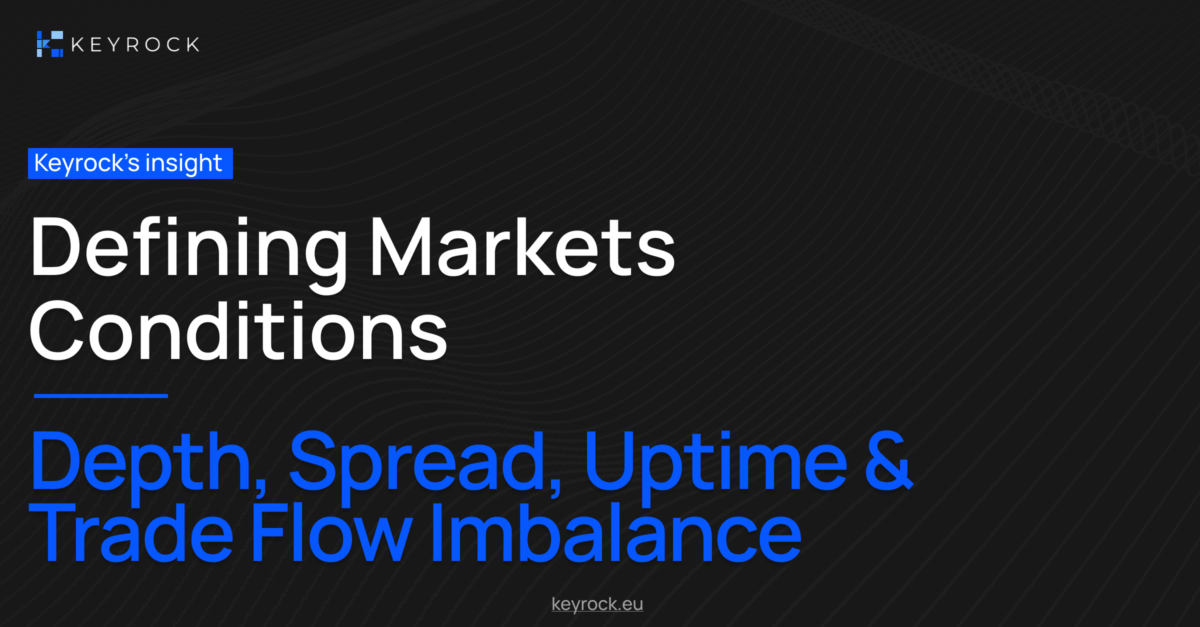Defining Markets Conditions: Depth, Spread, Uptime, and Trade Flow Imbalance
TL;DR:
- Looking at depth, spread, uptime, and trade flow imbalance are ways of determining favorable market conditions for market making.
- Depth refers to how many market participants are willing to buy or sell a particular asset at different price levels.
- Spread refers to the difference between a cryptocurrency’s price for the sellers and buyers participating in a particular market.
- Uptime refers to a system’s operational reliability, with no outages or interruptions.
- Trade flow imbalance refers to an excess of buy or sell orders for a specific asset at a specific moment in time.
